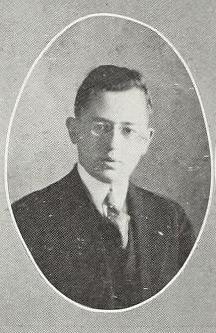Jacob S. Kasanin
Jacob S. Kasanin (1897–1946) was an influential American psychiatrist and psychoanalyst best known for his work on schizophrenia and for coining the term "schizoaffective disorder" in 1933. His contributions to the field of psychiatry have had a lasting impact, particularly in the areas of psychopathology and the classification of mental disorders.
Early Life and Education[edit | edit source]
Jacob S. Kasanin was born in 1897. Details about his early life are sparse, but he pursued a career in medicine, eventually specializing in psychiatry. He received his medical degree and underwent further training in psychoanalysis, which was emerging as a significant field of study at the time.
Career[edit | edit source]
Kasanin's career was primarily focused on clinical practice and research in psychiatry. He was deeply involved in the study of schizophrenia, a complex mental disorder characterized by disruptions in thought processes, perceptions, emotional responsiveness, and social interactions. In 1933, Kasanin introduced the concept of schizoaffective disorder in a seminal paper, describing patients who exhibited symptoms of both schizophrenia and mood disorders, such as depression or bipolar disorder. This was a groundbreaking contribution to psychiatric classification, acknowledging the overlap between affective and psychotic disorders and challenging the rigid categorizations of mental illnesses prevalent at the time.
Throughout his career, Kasanin was associated with several prestigious institutions and contributed to numerous scholarly articles and books on various aspects of psychiatry. His work emphasized the importance of understanding the nuances of psychiatric diagnoses and the need for a more flexible approach to categorizing mental health conditions.
Legacy[edit | edit source]
Jacob S. Kasanin's work on schizoaffective disorder has had a profound and lasting impact on the field of psychiatry. His insights into the complex interplay between mood and psychotic symptoms helped pave the way for more nuanced and individualized approaches to diagnosis and treatment. Today, schizoaffective disorder is recognized as a distinct category in major diagnostic manuals, such as the Diagnostic and Statistical Manual of Mental Disorders (DSM) and the International Classification of Diseases (ICD).
Kasanin's contributions extend beyond his work on schizoaffective disorder. He is remembered as a pioneering figure in psychiatry, whose efforts contributed to a deeper understanding of mental disorders and challenged the medical community to think more critically about the classification and treatment of psychiatric conditions.
Death[edit | edit source]
Jacob S. Kasanin passed away in 1946. Despite his relatively short life, his work has left an indelible mark on the field of psychiatry, influencing generations of clinicians and researchers.
This article is a psychiatry-related stub. You can help WikiMD by expanding it!
Search WikiMD
Ad.Tired of being Overweight? Try W8MD's NYC physician weight loss.
Semaglutide (Ozempic / Wegovy and Tirzepatide (Mounjaro / Zepbound) available. Call 718 946 5500.
Advertise on WikiMD
|
WikiMD's Wellness Encyclopedia |
| Let Food Be Thy Medicine Medicine Thy Food - Hippocrates |
Translate this page: - East Asian
中文,
日本,
한국어,
South Asian
हिन्दी,
தமிழ்,
తెలుగు,
Urdu,
ಕನ್ನಡ,
Southeast Asian
Indonesian,
Vietnamese,
Thai,
မြန်မာဘာသာ,
বাংলা
European
español,
Deutsch,
français,
Greek,
português do Brasil,
polski,
română,
русский,
Nederlands,
norsk,
svenska,
suomi,
Italian
Middle Eastern & African
عربى,
Turkish,
Persian,
Hebrew,
Afrikaans,
isiZulu,
Kiswahili,
Other
Bulgarian,
Hungarian,
Czech,
Swedish,
മലയാളം,
मराठी,
ਪੰਜਾਬੀ,
ગુજરાતી,
Portuguese,
Ukrainian
Medical Disclaimer: WikiMD is not a substitute for professional medical advice. The information on WikiMD is provided as an information resource only, may be incorrect, outdated or misleading, and is not to be used or relied on for any diagnostic or treatment purposes. Please consult your health care provider before making any healthcare decisions or for guidance about a specific medical condition. WikiMD expressly disclaims responsibility, and shall have no liability, for any damages, loss, injury, or liability whatsoever suffered as a result of your reliance on the information contained in this site. By visiting this site you agree to the foregoing terms and conditions, which may from time to time be changed or supplemented by WikiMD. If you do not agree to the foregoing terms and conditions, you should not enter or use this site. See full disclaimer.
Credits:Most images are courtesy of Wikimedia commons, and templates, categories Wikipedia, licensed under CC BY SA or similar.
Contributors: Prab R. Tumpati, MD

